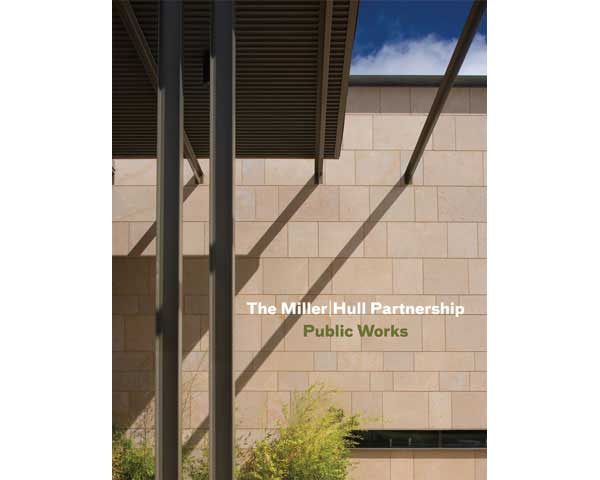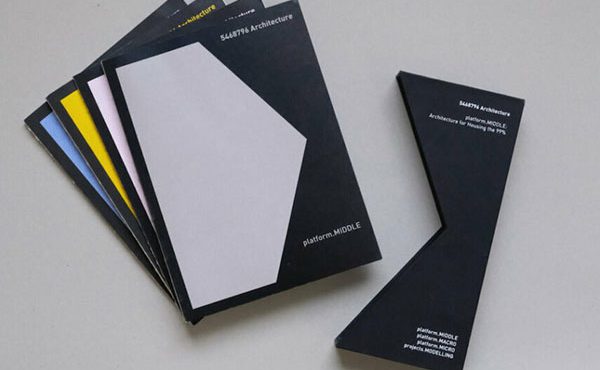“The Miller|Hull Partnership’s energy-conscious designs, love of local materials, and structural expressiveness helped define the essence of a new and exciting type of contemporary regionalism in American architecture – the Pacific Northwest style. The Miller|Hull Partnership: Public Works challenges the notion that public buildings must be mundane in appearance and functionality.”
– From the book’s introduction
Author: The Miller|Hull Partnership (Princeton Architectural Press, 2009)
This monograph of the AIA 2003 Firm of the Year, otherwise known as the Miller|Hull Partnership, is both stunning in its depiction of the firm’s most recent work, and timely in its emphasis on public works when many offices are currently seeking out infrastructure projects, as commercial and residential developments have all but ceased in our current financial quietus. Equally as compelling is the book’s revelation that this award winning firm had its start in Vancouver, as David Miller first worked for the late Arthur Erickson and later Rhone Iredale, providing the raison d’etre for Miller and Hull to start up a satellite firm of the Iredale office in Seattle, in 1975.
Two years later, they broke off to emerge as one of the most expressive, though unabashedly modest, contributors to the architecture of the Pacific Northwest. The influence of this school of architecture—including a number of well-known Vancouver and Seattle-based firms amongst its ranks—has invariably led half of this partnership to teach architecture, as David Miller is currently a professor within the architecture department at the University of Washington.
The story of the meeting of the pair is equally as serendipitous, as they both share the common thread of having done stints in the Peace Corps in the 1970’s. While Miller spent some years in Brasilia, Hull went to Afghanistan, where he would eventually start up the first school of architecture in Kabul. The ambition of their biographies now transmuted into the boldness of their practice, their office has grown substantially since its beginning in 1978. Their command of local materials mixed with a natural understanding of the unique environment that is the Pacific Northwest—be it the quality of light and knowing how a certain material will respond to it, or dramatically offsetting our sometimes dreary climate with the lightness and grace of a simple structural detail – this handsome 256-page hardcover volume leaves no doubt that the firm has matured into a force to be reckoned with in its body of built work.
As a follow up to the firm’s 2001 monograph, Miller|Hull: Architects of the Pacific Northwest, which displayed the firm’s work through a series of private residence’s and projects of a more intimate scale, this recent publication demonstrates that otherwise banal public buildings can have a more expressive face, as seen in relation to the site, material sensitivity, and heightened awareness of human activity. Of the 12 projects featured in the book, some standouts include the Wilsonville Water Treatment Plant in Oregon, which proves that a facility of this nature need not be surrounded by chain link fence, as well as the South Lake Union Discovery Center in Seattle, an adaptable exhibition space constructed of modules fully expressing their tectonics in a way similar to Rogers’ and Piano’s Centre Pompidou.
With the help of photographer Nic Lehoux among others, the book presents their body of work via 200 stunning colour photos, as well as black and white plans, elevations and sections. After a brief foreword by Portland architect J.M Cava, architect Brain Carter introduces the pair, stressing the importance of architects like David Miller and Bob Hull to ground architecture back in the reality of material and site, downplaying the ever growing influence of the vitural world, and praising them for their rationalism and ability to engage with sustainability, while resisting its greenwashed shortcomings. As the strength of their work speaks for itself in the pages that follow, a short impromptu interview entitled ‘Unplugged‘ provides the bookend to the monograph, accompanied by the impressive list of projects, awards, and the names of all the partners and colleagues who have passed through their doors.
With characteristics of their aesthetic and design ethos reminscent of local Vancouver firms like the Patkaus, Peter Cardew, and Roger Hughes, The Miller|Hull Partnership: Public Works is an impressive collection of projects, as delivered in an equally impressive monograph, exhibiting the nature centres, community centres, administration buildings, power plant facilities, and urban residential lofts that have represented a significant percentage of the work being done by their office in its most recent years.
An architecture of honesty and integrity, the work of the Miller|Hull Partnership as depicted in this book represents an enterprise of architecture which one of the book’s editors describes as ‘reflective practice’, wherein the architect foregoes the traditional design/bid/build model to fully understand the ramifications of the architect’s actions on the environment, whether tectonic, economic, or aesthetic. It places the architect in a heightened role of responsibility, in which their decisions have ethical as well as physical ramifications.
So then does The Miller|Hull Partnership: Public Works provide us with a glimpse into the world of one of the many vibrant architectural practices of the Pacific Northwest, and a model of how architecture can be locally responsive to material and climate, while providing environmentally responsible solutions to public building programs.
***
For more information on The Miller|Hull Partnership: Public Works, and access to a sample of the book, visit the Princeton Architectural Press website.
***
Sean Ruthen is an architect working, living, and writing in Vancouver.






One comment
Have a look at this book and others at the Toronto Reference Library:
http://www.torontopubliclibrary.ca/detail.jsp?Entt=RDM2474668&R=2474668